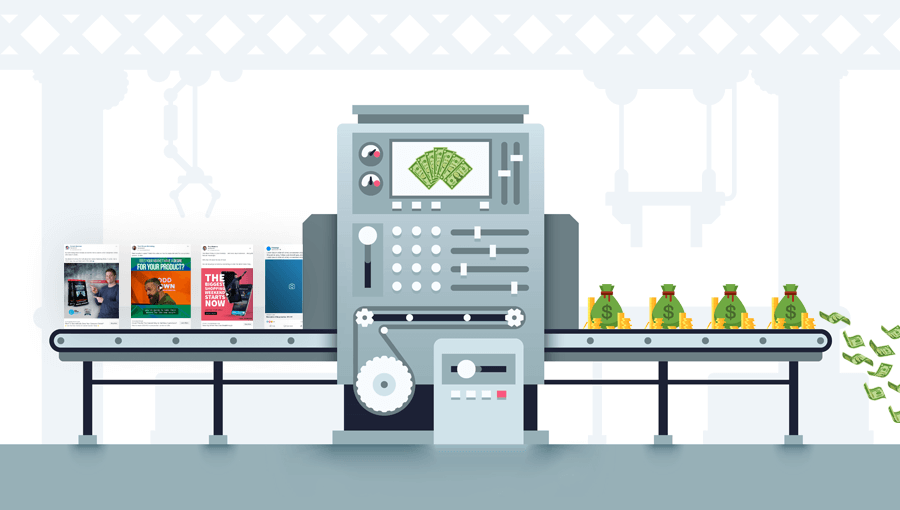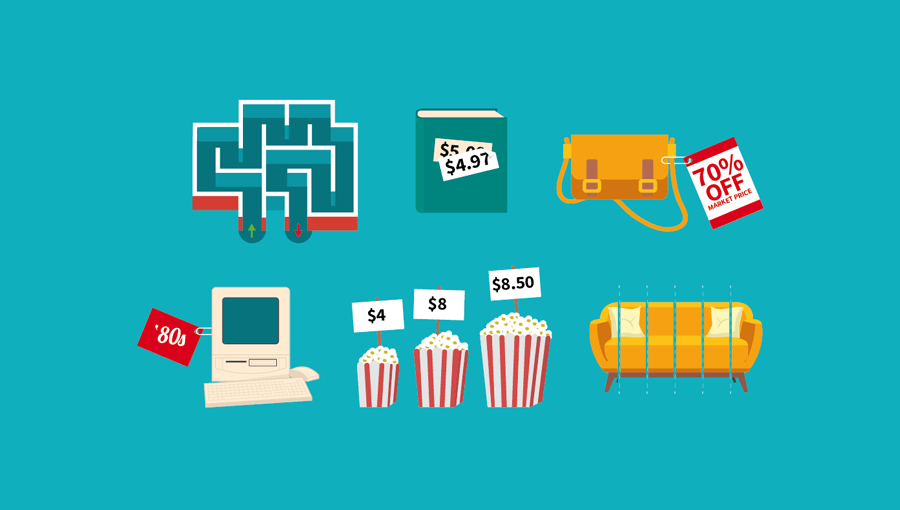How does your blog perform?
I don’t meet many people who can instantly, and positively say “like clockwork”.
I get it, content marketing isn’t as straight forward as its been made out to be over the years.
In fact, there’s nothing worse than wasting half your week researching what to write on, more hours on trying to find the best keywords, and even longer crafting that perfect blog post…
Only for nobody to actually do anything when they read it.
(and that’s if they’re reading it in the first place!)
A high converting blog page is the lifeblood of amazing content marketing.
It acts like an invisible salesman in the background, constantly converting readers into leads & customers.
But what does a high converting blog post actually look like?
Let me show you…
How To Turn Readers Into Customers In 18 Simple Steps

Each section is broken down in detail below:
- Headline: This is arguably the most important aspect of your blog post and page. It’s the entire reason people are there in the first place. According to David Ogilvy, “On the average, five times as many people read the headline as read the body copy. When you have written your headline, you have spent eighty cents out of your dollar”
- Byline and Date: Whilst there has been some debate around dating your blog posts (the argument for and against evergreen content), letting people know who you are is crucial. You are trying to create a relationship with your reader, and if they don’t know who you are you can never do that
- Banner: It’s been common practice for years to accompany your blog post with some sort of visual, and for good reason too. Studies have shown that blog posts with images get 95% more views than those that do not. This is probably the simplest way to get visual content into your articles.
- Content: The writing’s gotta go somewhere, right? ?
- Text Break: Breaking up your copy is crucial. Whether it be by text breaks, images, bullet points, there are tons of ways to do it. It makes for a better reading experience, which in turn keeps people on your posts longer. Heck, even Google index pages according to formatting like this!
- CTA Below The Post: Call to actions in your posts are essential! This is where your leads come from, and ultimately where you find customers if you are nurturing those leads. According to Grow And Convert, CTA’s below posts convert around 0.5% – 1.5%. You can (and should) of course look at other areas to place CTA’s, more on that in points 12, 16, and 18
- Author Box: The name of the game is to build trust, authority and relationships. Whilst the number often changes year to year, it’s said that you need a certain amount of “touchpoints” with your prospect to close a sale (I’ve seen people argue its 6 or 7, and some a lot higher at 13 and even 20+). Showing your reader that there is a real live human being talking with them is absolutely one of those touchpoints!
- Related Posts: The longer you can keep someone on your website, the higher the chances are of them converting into a lead (and ultimately a customer). If you can craft irresistible, instantly-clickable headlines, a section like this will absolutely get them reading more, staying on your site longer, and hopefully resulting with them giving you their email address (maybe more).
- Comments: Comment sections talk to the authenticity of what you’re trying to achieve, but only if you’re active. Look at people like Neil Patel and Brian Dean, they have tons of comments on their content, not only because they encourage it but because they also talk with their commenters. Remember the touchpoint argument? This is another high-quality touchpoint that goes a long way to cementing you as an expert in your field, or at the very least someone to listen to.
- Social Media Sharing Buttons: Traffic is the lifeblood of any blog, and this is a simple yet powerful way to drive free traffic. Even if only a small percentage of your visitors are sharing your posts, you’re still driving a repeatable, measurable form of free traffic to your website. More traffic = more leads, and more leads = more sales.
- About You: In recent years a lot of content marketers have moved this section to its own page, or to their “About Us” pages, but some still like to keep it in a sidebar in their blog posts (Neil Patel for example still does). If your business is service based, or high touchpoint / relationship based, I’d suggest keeping this on your posts.
- Email Subscription: This is a no-brainer. If a blog doesn’t have an email capture form on their content, they clearly don’t like money or want to grow as a business. Building lists is probably the most powerful marketing tactic you can employ right now, and offers an unmatched ROI when compared to EVERY other channel.
- Social Media Links: If you’re starting to drive some serious traffic, you can substantially grow your social profiles simply by having follow buttons in your posts. Whilst these are never usually high converters, it still beats having to pay social networks to get followers.
- Top Articles: Much like point #8, the idea here is to keep people on your site longer so they can eventually convert. The best way to do this is to show them your most read content, because chances are if so many other people love it a large percentage of your readers on that page will also be interested.
- Categories: Your prospects rarely have a one-track mind when it comes to the problems they’re trying to solve. The more solutions and content you can offer them, the more likely they are to stick around. Category links are a fairly simple way to help people navigate around your content.
- CTA Banner: Lead generation and list building can help you turn your business into everything you’d ever dreamed it could be. Behind those are CTA’s, whether its an email opt-in right there or a banner to a landing page, your CTA’s feed your lists. Healthy, growing lists are where smart marketers find cheap conversions
- Navigation: How do you want your readers to navigate your site – do you put all your links in your navigation bar, or do you keep them tucked away in your footer? If you’re writing for conversions (IE leads), chances are people will have questions about what you sell, and generally tend to look at navigation bars for things like features and pricing. Whilst these are pretty standard, don’t hide them and make sure you have the right info in your navigation bar.
- Hero Image + CTA: I’ve seen these called “mini welcome mats” and even “Feature Boxes”, but depending on how you use them they can convert incredibly well! Grow And Convert estimate that feature boxes tend to convert 3% – 9% of the time. If you’re driving 1,000 people to your blog posts every month, you’re probably looking at around 90 new subscribers you can now cross sell or upsell. Score!
Until next time, here’s to better blog conversions.






